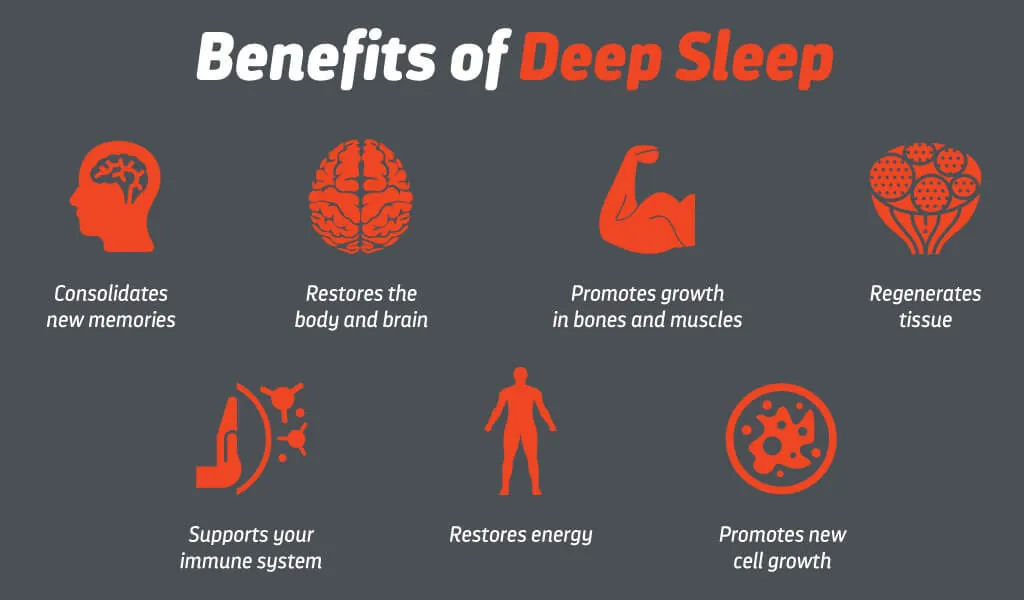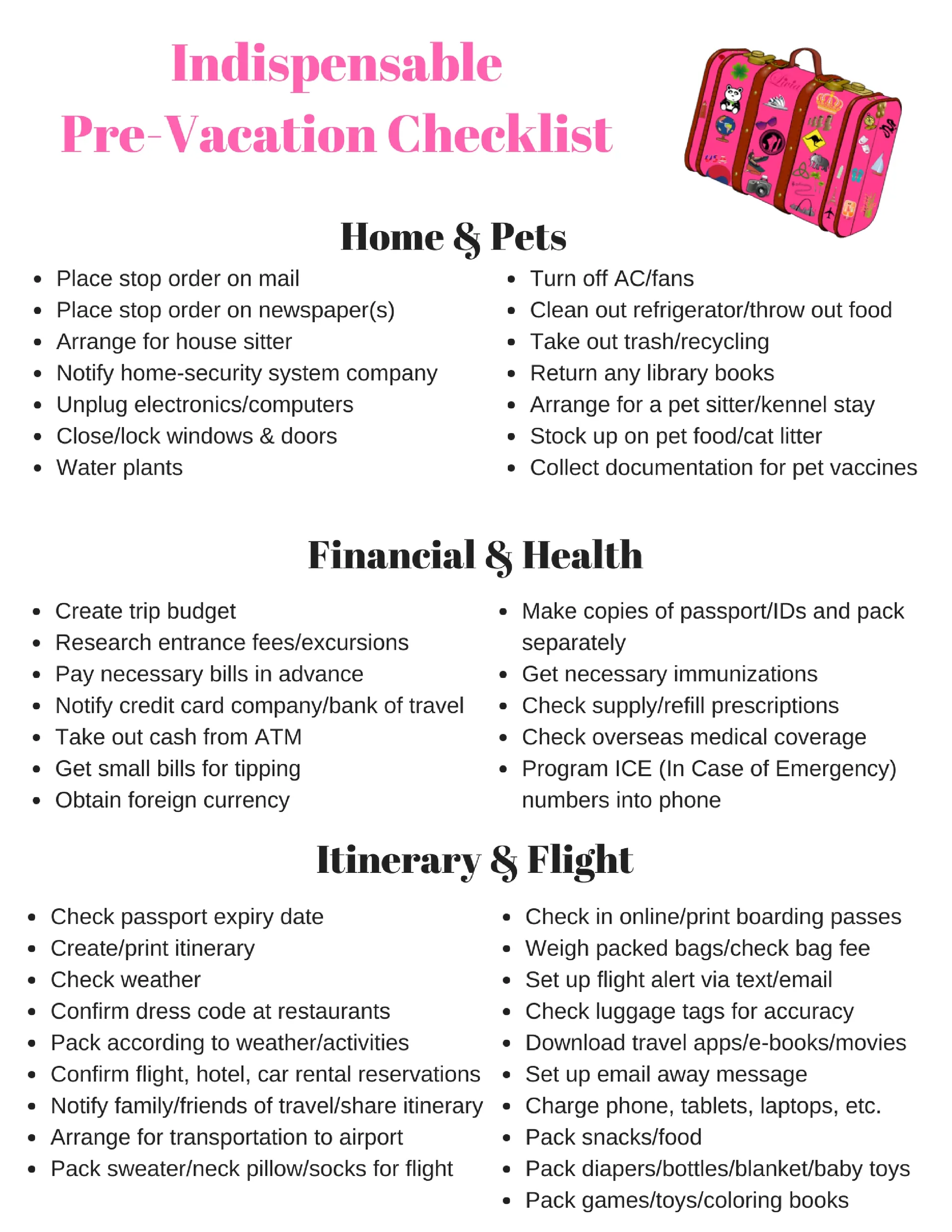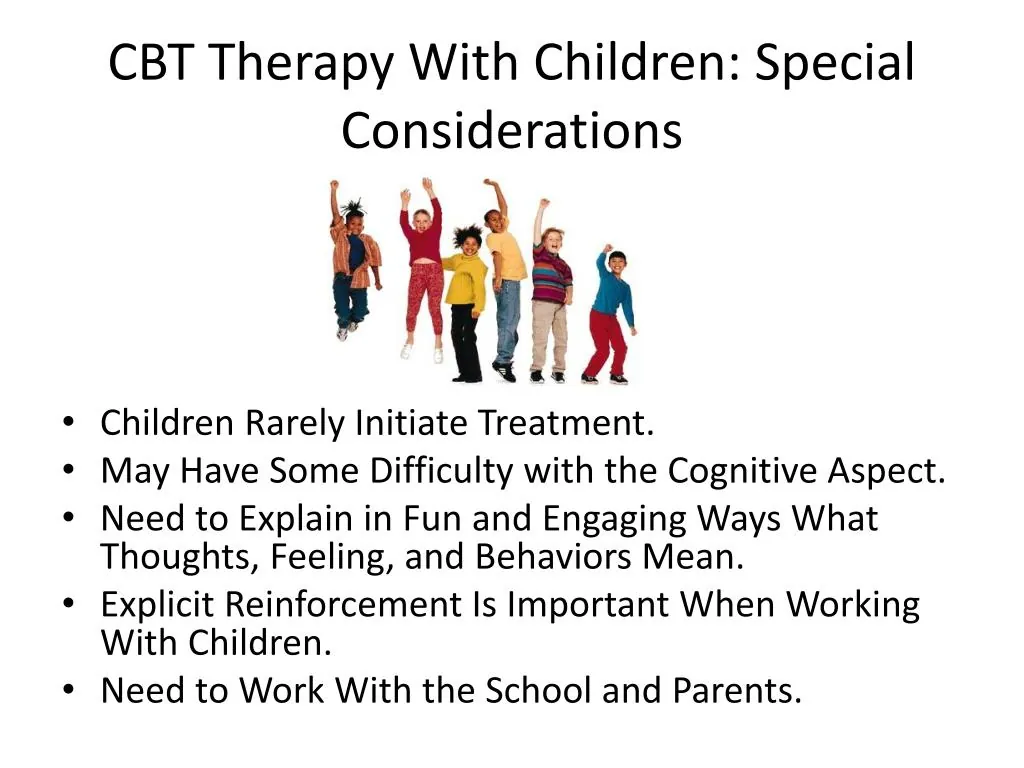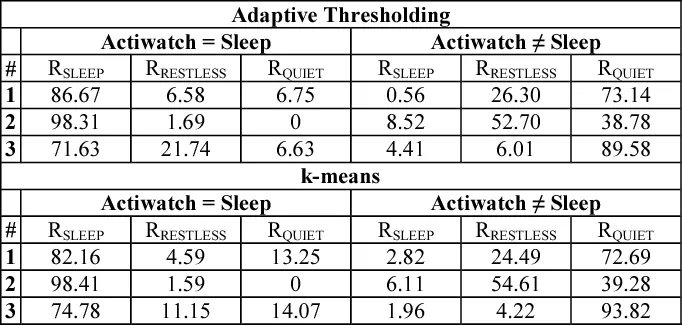How to Get Better Sleep on a Family Vacation
Family vacations are often seen as a time to relax, bond, and explore new experiences together. However, the need for rest and proper sleep is sometimes overlooked in the whirlwind of planning and activities. Quality sleep is essential, not just for maintaining energy levels but also for fostering patience, boosting mood, and ensuring that everyone in the family can fully enjoy the journey. In this guide, we’ll explore actionable strategies to ensure better sleep for every family member—whether you’re navigating unfamiliar environments, managing jet lag, or trying to maintain routines on the go.
The Importance of Sleep on Family Vacations

Vacations are as much about unwinding as they are about discovering new destinations. Yet, the lack of proper rest during travel can turn even the most exciting adventure into a stressful affair. Sleep is a key component of our physical and mental well-being, helping us recharge and stay resilient. For families, especially those with young children, good sleep ensures fewer meltdowns, better moods, and a cooperative spirit to tackle the demands of travel.
Unfortunately, vacation sleep comes with unique challenges. Jet lag from crossing time zones can throw off circadian rhythms, leading to grogginess or sleepless nights. Unfamiliar environments—such as hotel rooms, cabins, or rental homes—may feel disorienting, making it difficult for children and even adults to settle into restful slumber. Additionally, overstimulation from packed itineraries or disrupted routines can leave everyone overtired and restless by the end of the day.
The good news is that these hurdles are manageable. This article will guide you through pre-vacation preparation, creating sleep-friendly environments, maintaining bedtime routines, handling common sleep disruptions, and more. By prioritizing sleep, you’ll not only improve the quality of your trip but also foster memories that are filled with joy rather than exhaustion.
1. Pre-Vacation Preparation

Proper planning ahead of your trip can make a significant difference in how well your family sleeps on vacation. From carefully timed travel schedules to thoughtful packing lists, these steps can set the stage for restful nights away from home.
1.1 Planning Travel Times Around Sleep
Timing your travel to align with your family’s usual sleep cycles is one of the most effective ways to reduce disruptions. For instance, if you’re flying with young children, aim to schedule flights during their regular nap times or bedtime. This increases the chances of them falling asleep naturally during the trip and arriving at the destination more rested.
Avoid red-eye flights whenever possible, as these can disrupt both adults’ and children’s circadian rhythms. If late-night or early-morning travel is unavoidable, build in extra downtime upon arrival to help everyone adjust. For road trips, consider starting your journey during early morning hours when children are often calmer and more likely to nod off in the car.
1.2 Packing Essentials for Better Sleep
Packing the right sleep-related items can transform unfamiliar surroundings into a comforting, sleep-conducive environment. Essential items include:
- Travel pillows and blankets: These provide a sense of familiarity and comfort, especially during flights or long car rides.
- Blackout curtains or portable blackout blinds: Perfect for blocking out unfamiliar light sources in hotel rooms or Airbnbs.
- White noise machines or apps: Help drown out disruptive noises, such as traffic or unfamiliar nighttime sounds.
- Familiar comfort items for kids: Bring along their favorite stuffed animals, blankets, or bedtime storybooks to ease anxiety in strange surroundings.
- Portable cribs or toddler beds: If you’re traveling with young children, these are invaluable for providing a sleep setup that mimics home.
These versatile items serve as bridges between home and vacation life, ensuring everyone rests easier.
1.3 Adjusting Sleep Schedules Beforehand
To combat time zone differences, begin gradually shifting sleep schedules a few days before departure. For example, if your destination is three hours ahead, move your family’s bedtime 15–30 minutes earlier each evening leading up to the trip. Strategic exposure to natural light can also aid circadian alignment: spend mornings outdoors if adjusting to earlier time zones or evenings outside when preparing for later time zones.
This proactive approach not only makes the first few days of travel smoother but also minimizes the grogginess that often accompanies abrupt changes in routine.
2. Setting Up a Sleep-Friendly Environment

A peaceful and sleep-conducive environment is crucial for restful nights, especially in unfamiliar surroundings. Whether you’re staying in a hotel, rental property, or family member’s home, taking steps to replicate soothing conditions from home can make a tremendous difference.
2.1 Choosing the Right Accommodation
Opting for family-friendly accommodations can simplify sleep logistics. Look for features such as:
- Soundproof rooms: These help avoid disturbances from noisy neighbors or hallway activity.
- Blackout curtains: Vital for ensuring darkness, especially in areas with bright city lights.
- Separate sleeping spaces: If your budget permits, book accommodations with multiple rooms or suites to allow separate sleeping areas for kids and adults.
Before booking, call ahead to confirm the availability of essential items like cribs, toddler beds, or additional bedding. Hotels offering family-friendly perks often go the extra mile to support restful stays.
2.2 Mimicking Home Sleep Conditions
To ease the transition to a new environment, recreate the conditions your family associates with sleep at home.
- Temperature control: Aim for a room temperature between 68–72°F—optimal for most people.
- Darkness and quiet: Utilize portable blackout curtains or eye masks to block out unwanted light and white noise machines or apps to neutralize unfamiliar sounds.
- Familiar bedding: Bring your child’s favorite pillowcase or a familiar scent (e.g., their usual laundry detergent) to provide comfort and reassurance.
These small efforts create a calming cocoon, minimizing sleep disruptions caused by unfamiliar surroundings.
2.3 Managing Room Sharing Challenges
Room sharing is often unavoidable during vacations, but with some creativity, you can maintain privacy and minimize disturbances. Portable partitions or specialty products like SlumberPods create individual sleeping spaces, especially useful for young children who may be distracted by others in the room.
If room sharing includes sharing beds, try to stick to your family’s usual arrangements—if your kids don’t co-sleep at home, introducing it while traveling can lead to disrupted rest. Conversely, if bed-sharing is part of your routine, allow for extra bedding space to ensure comfort.
3. Maintaining Sleep Routines While Traveling

Consistency is key when it comes to sleep routines. While vacations often bring a break from regular schedules, sticking to familiar bedtime rituals and routines can provide comfort and predictability for children and adults alike.
3.1 Sticking to Regular Bedtime Routines
Recreating bedtime rituals from home—whether it’s reading a story, brushing teeth, or singing lullabies—can signal to children that it’s time for sleep, even in a new environment. These rituals offer familiarity and help ease anxiety caused by the day’s unfamiliar experiences.
Avoid screen time at least an hour before bed, as blue light disrupts melatonin production, making it harder to fall asleep. Instead, engage in calming activities like reading or talking about the day’s adventures.
3.2 Handling Naps on the Go
Naps can be challenging to manage during travel, but they’re essential for young children (and even parents!) who may need a midday energy boost. Encourage stroller or car naps during busy days but prioritize at least one restorative nap in a quiet, dark environment whenever possible.
Plan activities around nap schedules to avoid overtiredness—an overtired child is more likely to resist sleep later on.
3.3 Managing Late Nights and Early Mornings
Vacations often include late-night activities like sightseeing or family dinners. To counteract the effects of staying up later than usual, allow for earlier bedtimes the following day or schedule breaks for rest throughout the day.
For early risers, provide quiet morning activities like coloring books or tablet games with headphones to ensure other family members can sleep in.
4. Overcoming Common Sleep Disruptions

Even with the best preparation, vacations can bring unforeseen sleep challenges. From jet lag to noisy environments, these disruptions can negatively impact rest. Thankfully, there are effective solutions to help your family overcome these hurdles.
4.1 Coping With Jet Lag
Jet lag is one of the most common sleep challenges during travel, especially when crossing multiple time zones. Combatting it starts with aligning with the local time as soon as you arrive.
- Stay awake or nap strategically: If you arrive early in the day, try to stay awake until a reasonable local bedtime. Short naps (20–30 minutes) during the day can also help without interfering with nighttime sleep.
- Use natural light: Expose yourself to morning sunlight to adjust to an earlier time zone or evening light for a later one.
- Melatonin supplements: These can assist in resetting the body clock but should be used sparingly and only for adults or older children. Always consult a healthcare provider before using them with kids.
By gradually easing into the local time and practicing good sleep hygiene, you can minimize the groggy effects of jet lag.
4.2 Dealing With Noise and Light
Unfamiliar noise and lighting conditions can be disruptive, especially for children. To address these issues:
- Block out sound: White noise machines or apps can mask unfamiliar sounds like traffic or hotel hallway noise. If preferred, earplugs can work for older kids and adults.
- Control light exposure: Use portable blackout curtains or cover windows with towels if necessary. Sleep masks are another great option for blocking out light.
Establishing a quiet, dark sleeping area can make even the noisiest or brightest environments more conducive to rest.
4.3 Managing Stress and Excitement
The excitement of a new destination—or the stress of travel logistics—can make it hard to wind down. Relaxation strategies can help ease the transition to sleep:
- Deep breathing or yoga: Simple techniques before bedtime can calm the mind and body.
- Preparation for kids: Before the trip, talk to children about sleep expectations and introduce them to the sleeping arrangements upon arrival. Familiarity with the new space helps reduce anxiety.
By creating calm end-of-day routines, you can help everyone unwind after eventful days.
5. Nutrition and Exercise for Better Sleep
What your family eats and how active they are during the day play significant roles in sleep quality. A balanced approach to nutrition and exercise can set the stage for restful nights.
5.1 Meal Timing and Choices
Heavy meals and late-night snacks can interfere with sleep. To optimize digestion and relaxation:
- Avoid caffeine or sugary items (e.g., sodas or desserts) close to bedtime, especially for children.
- Opt for light snacks: Bananas, yogurt, or warm milk are good options if anyone is hungry before bed.
- Stick to regular meal times: Eating according to the local time zone can also help reset your family’s internal clocks.
These habits encourage better digestion and support natural sleep cues.
5.2 Physical Activity During the Day
Active days lead to restful nights. Encourage outdoor play, sightseeing, or light exercise during daylight hours to expend energy. However, avoid vigorous activity close to bedtime, as this may overstimulate the body and delay the onset of sleep.
Incorporating both movement and relaxation into the day’s itinerary creates a healthy balance for better rest at night.
6. Special Considerations for Children

Children often have unique sleep needs during travel. From managing night wakings to understanding age-specific requirements, here’s how to ensure your little ones get the quality sleep they need.
6.1 Age-Specific Sleep Needs
Children’s sleep requirements vary by age, and adjusting schedules accordingly can help ensure they’re well-rested:
- Babies (0–12 months): Need 14–17 hours of sleep per day. Plan for naps and early bedtimes.
- Toddlers (1–3 years): Require 11–14 hours. Stick to nap schedules and avoid overstimulation.
- Preschoolers (3–5 years): Need around 10–13 hours of sleep. Maintain a consistent bedtime routine even on vacation.
Understanding their specific sleep needs allows for realistic planning that keeps everyone happy.
6.2 Comfort Items and Familiarity
Children often find solace in familiar items from home. Whether it’s a favorite stuffed animal, blanket, or bedtime story, these items can provide a sense of security and comfort in new surroundings.
Letting kids be part of the packing process can also help. Allow them to choose their comfort items, so they feel more involved and secure during the trip.
6.3 Handling Night Wakings
Night wakings are common among children when they’re in unfamiliar environments. To handle these gently:
- Respond minimally: Avoid engaging too much or providing excessive stimulation.
- Reassure with comfort items: Pacifiers, loveys, or other familiar objects can help soothe them back to sleep.
By keeping interactions calm and brief, you can encourage children to settle back into sleep without creating new sleep habits you’ll need to break later.
7. Returning Home: Post-Vacation Sleep Adjustment

Once your family vacation ends, you may face the challenge of transitioning back to normal routines at home. Here’s how to make the adjustment smooth and seamless:
7.1 Re-establishing Routines
The key to adjusting post-vacation is consistency. Reinstate regular bedtimes, wake times, and bedtime rituals as soon as you get home. Avoid the temptation to let everyone “catch up” on sleep with irregular naps or late wake-ups, as this can prolong the adjustment process.
7.2 Addressing Sleep Debt
If your family has accumulated sleep debt (lack of proper rest) during the trip, prioritize early bedtimes for a few days rather than long naps. This strategy helps regulate circadian rhythms while still allowing for recovery.
Allowing your family a few low-key days to acclimate before returning to school or work can also ease the adjustment period.
FAQs: Common Questions About Family Vacation Sleep
1. How can I help my toddler nap while traveling?
Encourage naps in strollers or car seats during quieter parts of the day, but prioritize at least one restorative nap in a tranquil, dark environment whenever possible.
2. What should I do if my child refuses to sleep in an unfamiliar place?
Maintain familiar bedtime routines and use comfort items like favorite toys or blankets. Spending a few extra minutes with them as they fall asleep may also help them feel more secure.
3. Is it okay to let my child skip naps on vacation?
Occasional skipped naps are fine, but balance them with earlier bedtimes to prevent overtiredness, which can lead to sleep difficulties later.
4. How do I manage jet lag with kids?
Prepare for jet lag by gradually adjusting sleep schedules before departure. Upon arrival, spend time outdoors to utilize natural light to recalibrate your internal clock.
5. Can adults take melatonin while traveling?
Yes, adults can use melatonin as part of a broader strategy for resetting sleep schedules. However, it should be used sparingly and as a supplement to other adjustments like light exposure and consistent routines.
Conclusion: Prioritizing Sleep for a Memorable Vacation

Sleep is the foundation of a successful family vacation. It brings balance to your days, ensures everyone stays in good spirits, and amplifies the joy of exploring new destinations together. By addressing sleep challenges early—whether it’s jet lag, unfamiliar environments, or routine disruptions—you can create a travel experience that feels as restorative as it is fun.
Through thoughtful preparation, such as adjusting sleep schedules ahead of time, packing sleep essentials, and setting up sleep-friendly environments, your family can enjoy restful nights no matter where you go. Maintaining familiar routines while on the road and managing sleep disruptions with creativity and care will set the tone for a smoother trip. And when the vacation ends, gently easing back into home routines will ensure a seamless return to everyday life.
Ultimately, vacations are about creating lasting memories, not about running your energy reserves dry. Prioritize rest, and you’ll find that not only does everyone enjoy the journey more, but you’ll also return home feeling recharged and ready for your next adventure. A well-rested, happy family is the secret ingredient to the perfect getaway. Safe travels and sweet dreams!






